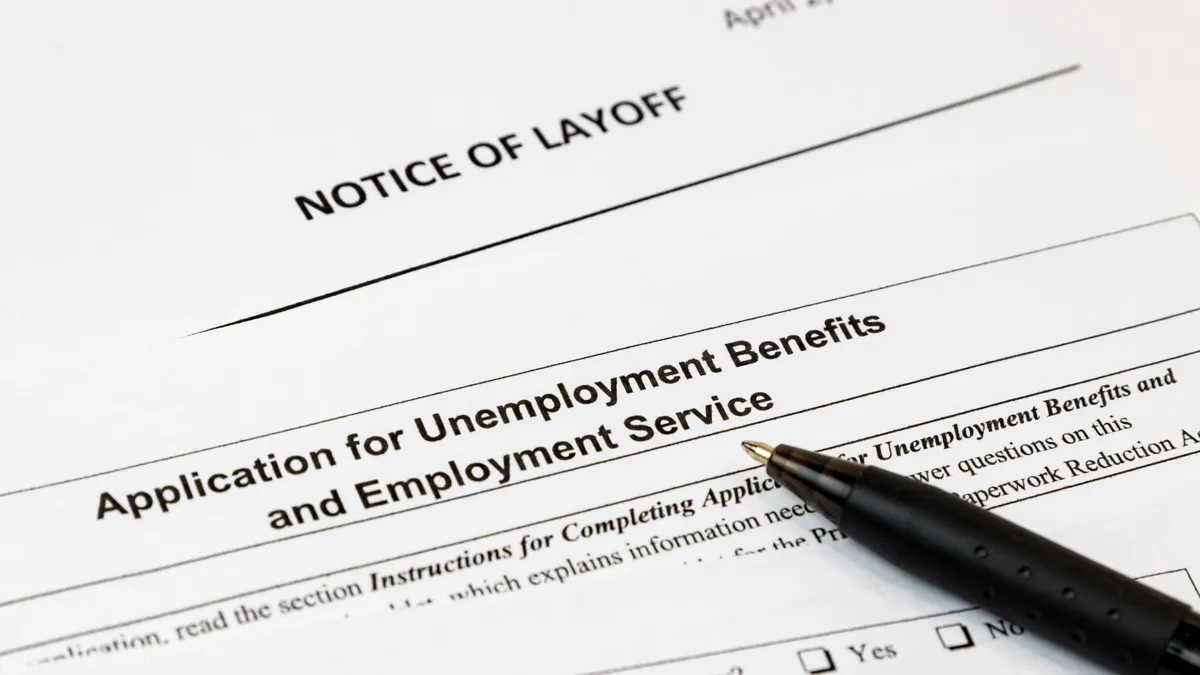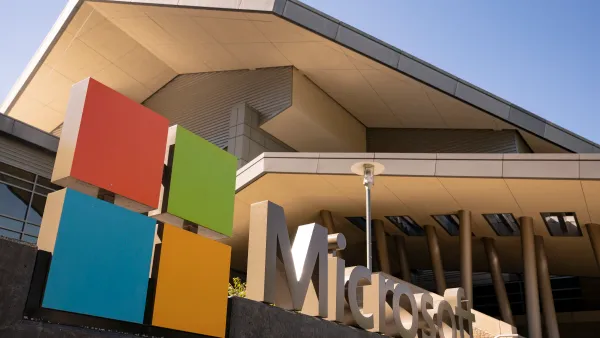Dive Brief:
- A recent uptick in U.S. employment claims is still unlikely to alleviate labor market tightness, with labor demand still exceeding that of labor supply.
- U.S. unemployment claims rose higher than expected for the week ending Nov. 19, with jobless claims increasing by 17,000 from the previous week’s revised level, the Labor Department said Wednesday.
- The uptick in new filings for the week is “likely more noise than signal,” however, Ryan Sweet, chief U.S. economist at Oxford Economics cautioned, noting that while the Federal Reserve needs the labor market to cool in order to engineer a soft landing, “the monetary policy implications of the recent rise in new filings isn't significant.”
Dive Insight:
The advance figure for seasonally adjusted claims was 240,000 for the week ending Nov. 19, with the previous week’s level revised to show 1,000 more applications filed, the Labor Department said.
Initial claims for unemployment this time of year need to be taken “with a grain of salt,” Sweet said in emailed comments sent to CFO Dive, pointing to increased volatility prior to the holidays as well as the increase in layoffs across the technology sector in particular as potential factors that could have contributed to the week’s larger than expected increase in jobless claims.
Technology layoffs have climbed recently, Sweet said, pointing to data from executive coaching firm Challenger, Gray & Christmas which shows technology companies reported the highest number of job cuts in October 2022. Layoffs in technology totaled 9,587 for the month, reaching 28,207 so far this year. This represents a 162% year-over-year increase, according to the firm.
Job openings have still exceeded the amount of individuals looking for work throughout recent months even as the Fed has persistently hiked interest rates in a bid to reduce wage and pricing pressures. The unemployment rate rose to 3.7% in October, with 6.1 million individuals looking for work, according to the Labor Department. Meanwhile, job openings reached 10.7 million in September.
Restoring price stability remains the top priority for the Federal Open Market Committee (FOMC), Cleveland Fed President Loretta Mester said in comments to Bloomberg Nov. 22, noting the committee was “committed to using our tools” to meet the Fed’s 2% inflation target.
In terms of a shift in monetary policy, the Fed would “want to see trend job growth south of 100k per month to help put downward pressure on nominal wage growth,” Sweet wrote. “This could take longer than expected. Even though the economy has softened, businesses are still holding onto workers because of difficulties filling open positions.”
While this uptick in jobless claims may not materially affect labor conditions, several other economic factors could indicate the pace of inflation may be slowing.
The Consumer Price Index (CPI) rose lower than expected by 7.7% in October, for example, while demand is also declining and supply chain disruptions that have lingered in recent months have begun to dissipate — all factors that could indicate inflation may have “peaked,” according to a recent report by Fannie Mae.
Tightening by the Fed will also likely slow economic growth, with job losses increasing as openings decline, a Nov. 21 report by Fitch Ratings predicted, with the U.S. to slump into recession next year, according to the report.












